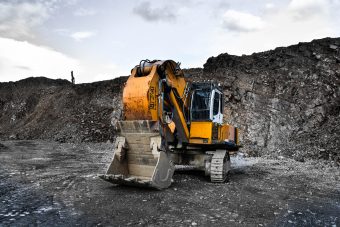Lithium has been a major topic for a long time not only in our country, but also in other countries of the world. It’s not about a few days and months, it’s about years of activism. There are several countries in Europe that have large amounts of lithium, and one of those countries is Spain, which is at the very top of the list of the most well-supplied.
In the territory of Spain, specifically in the region of Extremadura, protests against exploitation are taking place for this reason. The government of this province supports the project to build a lithium mine near Cáceres, known for its beauty. The planned mine is located close to a populated city, and expectations are that it could produce over 16,000 tons of lithium hydroxide for batteries annually over a 30-year period. This means that according to certain data, over half a million tons of this raw material can be produced in this mine over three decades. Despite the decisions of higher authorities, the local population is resisting such a project. Environmental groups are particularly concerned about the possible pollution of water and air, as well as the destruction of local flora and fauna, especially since this area is home to numerous protected species of plants and animals. In 2020, the mayor of Cáceres rejected the possibility of opening the mine, but what will happen next with one of the largest European deposits remains a question.
They tried to fight against lithium deposits in Latin America as well. Bolivia, Chile and Argentina are among the world’s largest lithium deposits. In January 2023, the Atacama Indigenous People’s Council (CPA) organized roadblocks to express their dissatisfaction with the lack of consultation regarding the agreement between the state company and the mining company, a lack of agreement that is also a problem in other parts of the world. Although the blockades were subsequently lifted after the agreement was reached, the tension has not subsided.
During 2024, anti-lithium mining protests continued across Latin America, particularly within this “Lithium Triangle”. In Chile, in addition to protests of this type, protests were also organized in the ports this spring that hindered the export of lithium and other raw materials, demanding better working conditions and greater safety.
On the other side of the world, lithium is also a hot topic. The Australian government has blocked the opening of a uranium mine at a site inside a national park. This decision followed a long-standing dispute over the exploitation of one of the world’s largest deposits of high-quality uranium. Energy Resources Australia (ERA), majority-owned by Rio Tinto, planned to resume mining, but faced strong opposition from the local community of Mirara, and the government just decided to end the long-standing problem. The original plan to develop the mine was stopped about 30 years ago after massive protests, and the current government decision has confirmed the same.

However, there was also an incident in Australia in 2020, when Rio Tinto destroyed a 46,000-year-old Aboriginal shrine during mining, which is not the first time an indigenous community has rebelled against the impact of mining on their land.
On the other side of the world, the United States faces great opportunities in lithium exploitation, given that it has rich untapped reserves, and there is currently only one active commercial mine in Nevada. In order to reduce dependence on foreign sources, the US plans to increase domestic production. At the beginning of the year, we wrote that the US Department of Energy confirmed that Solton Si is a new large deposit. The lake is located in California, the area is about 820 km², and the Lawrence Berkeley National Laboratory in the USA predicts that this region could yield 3.4 million tons of lithium, which is enough for more than 375 million batteries needed to make electric vehicles .
The U.S. is not alone in ramping up lithium mining efforts. Australia, despite the decision it made these days, is one of the largest producers of lithium in the world and dominates the global market.
In Serbia, protests are again current and directed against the Rio Tinto company project. The main reasons are environmental and health related. Local residents and communities often feel excluded from the decision-making process about mining on their land, just as has been the case in other parts of the world. Protests spread across the country, including Valjevo, Loznica, Grocka, Negotin, Šabac, Aranđelovac, Kraljevo, Ljig, Barajevo, which brought people together for the same reason – an important social, social and environmental issue.
Energy portal
Source: energetskiportal.rs


